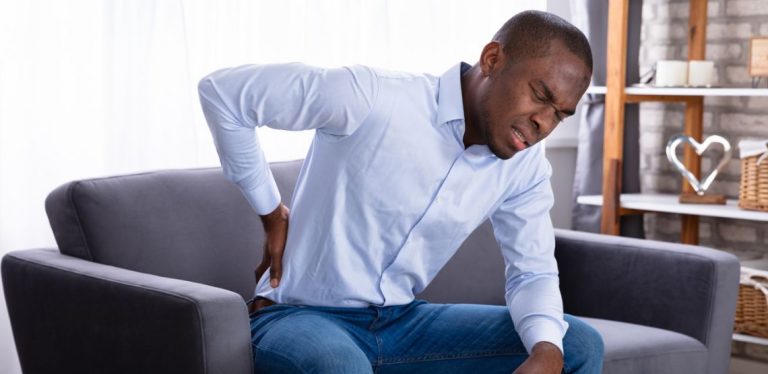What Is a Bulged Disc?
Across the world, back pain impacts millions of people every year. Depending on the severity, back pain can seriously hinder one’s quality of life.
As the spine is a very complex structure, there are many types of back pain with various causes. The spine is made up of 24 vertebrae, where discs sit in between each vertebrae bone. These discs help absorb the shock and prevent painful bone-on-bone grinding. On the outer portion of the discs, tough cartilage helps maintain each disc’s shape and structure.
As the body ages, these discs face inevitable wear and tear; as time goes on, they become dehydrated and stiff. These changes can lead to the bulging of part of the disc, where the tough cartilage part sticks out, which may or may not cause pain.
This article will focus on back pain caused by a bulged disc, including what it is, the difference between a bulged disc and a herniated disc, and the top symptoms of a bulged disc. Let’s take a look!
What Is the Difference Between a Bulged Disc and a Herniated Disc?
Surprisingly, bulged and herniated discs aren’t necessarily the same. While a bulged disc often involves only the misplacement of the tough cartilage, a herniated disc, on the other hand, happens when this cartilage cracks, causing the inner and soft part of the disc to protrude outward. Herniated discs are frequently referred to as a “slipped disc” or a “ruptured disc.”
In fact, a herniated disc is more likely to cause increased pain due to the inner part of the disc protruding farther outward. Ultimately, for a proper diagnosis to be made (and confirmed), an MRI is typically performed.
3 Symptoms of a Bulged Disc
So, what tell-tale signs should you watch out for when it comes to a bulged disc?
While herniated and bulged discs are different, their symptoms are very similar. In fact, a bulging disc can lead to a herniated disc. So, while the symptoms below indicate a bulged disc, they may also suggest a herniated disc has occurred. This is why it’s always important to visit your doctor and gain a professional diagnosis. From there, you can determine the best plan of action toward recovery.
Related Search Topics (Ads)
1. Pain When Sitting
Typically, bulged or herniated disc symptoms tend to get aggravated by sitting or certain activities. This is often true because these more commonly occur in the lower back, which often comes under stress when seated.
If your discs are out of alignment, sitting puts more pressure on them, increasing pain. This pain may also start in your lower back and extend down to your legs if a nerve is getting pinched or not. However, some individuals may only have aches and pains occurring in their lower back.
2. Sciatica
Sciatica is the term used to refer to neural pain that happens when the sciatic nerve (the longest nerve in the body that runs from the low back and down the legs) becomes irritated or compressed. For instance, the disc may press directly on the sciatic nerve, or it may release chemicals that cause inflammation which then presses on the sciatic nerve.
Many individuals describe this symptom as a “burning” or “tingling” or “numbness” type of sensation that impacts the front or back of the legs. Usually, sciatica only impacts one leg at a time but it can occur in both under rare circumstances.
3. Pain with Specific Activities
Pain due to a bulged disc may get worse when you sneeze, cough, push or pull a heavy object, lift a heavy object, or bend forward. Usually, these movements are followed by sudden pain in the lower back.
Some individuals may also have muscle weakness, but this is often in more severe cases of a slipped or herniated disc. If you ever experience loss of function or loss of bladder or bowel control, it’s important to seek immediate medical attention.
Getting the Help You Need
If you have experienced any of the symptoms above, you should consider seeing your doctor or physical therapist. Your doctor or physiotherapist can perform a thorough assessment and get to the root of your problem.
Furthermore, it’s crucial not to rest for long durations with back pain. In fact, resting can make the pain worse. Walking and performing stretches that don’t aggravate the pain are best. Before your doctor’s appointment, you might also benefit from over-the-counter pain medications or anti-inflammatories to help reduce the pain and make it manageable. However, it is also important to note that NSAIDs should never be taken long-term due to side effects, like ulcers, that can arise with chronic use.

